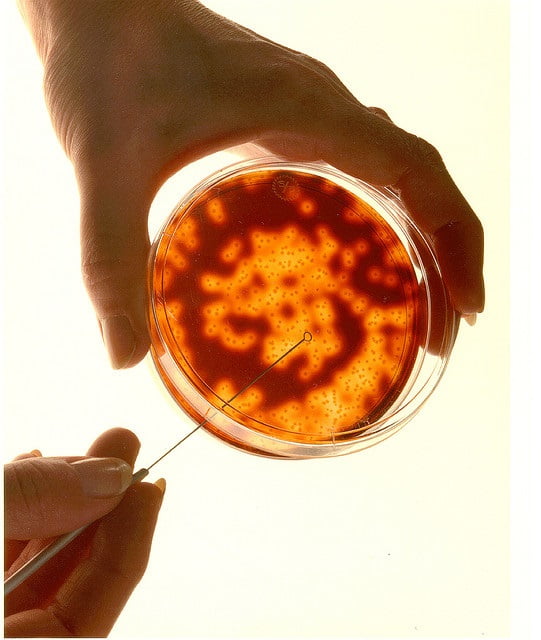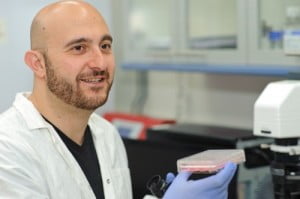For the millions of individuals who have undergone radiation treatments for cancer and other diseases, or for those who can no longer conceive, there is exciting news that may give new hope. Breakthrough research from the Weizmann Institute in Israel has, for the first time, succeeded in creating human ova (eggs) and sperm, the essence of human reproductive process, at their earliest stages in the lab. Dr. Jacob Hanna, together with his research student Leehee Weinberger, achieved a phenomenal feat in the world of cellular biology that could translate into baby-making in the petri dish in the not-so-distant future.
Mimicking mouse cells to make it work
Dr. Hanna’s research, published in ‘Cell,’ is a step in the right direction for anthropologists and scientists who worry that we will soon face a reproductive crisis, and is one of the most outstanding achievements in cellular biology made in recent years. According to Dr. Hanna, “Researchers have been attempting to create human primordial germ cells (PGCs) in the petri dish for years,” essentially since 2006 when it was discovered that adult cells (iPS cells) could be reprogrammed into embryonic stem cells. Then, a number of years ago, Japanese researchers succeeded in turning the clock backwards in cells belonging to mice, making many in the field curious if the same could be achieved in human cells.
SEE ALSO: Technion Discovery May Put Stem Cells In Amniotic Sac
Before you get too lost in the medical jargon, PGC cells are those cells that arise in the earliest stages of embryonic growth, at the important stage when the stem cells begin to differentiate themselves from basic into specific cell types in the body. In order to program the initial human iPS cells (which can be taken from the skin or mouth) back into PGCs, Dr. Hanna and his team focused on determining how human iPS cells differ from mouse embryonic cells. This is because for the Japanese team, the mouse embryonic cells were easily maintained in their stem cell state, while human cells need to be reprogrammed by inserting genes that drive the cell to differentiate. Hanna and his research team were able to create a new method that “tuned down” the genetic pathway for differentiation from an existing iPS cell that they called a “naïve cell,” cells that appear to rejuvenate iPS cells so that they are closer to the original embryonic state. This way Dr. Hanna believed he could trick the iPS cells into thinking they were similar to the mice cells, therefore creating the earliest form of human life, PGCs, in a petri dish.
And the team’s attempts to beat biology at its own game succeeded; using the same techniques that had been applied in the research on mice, Dr. Hanna produced cells that seemed to be identical to human PGCs. With the assistance from Cambridge University Prof. Azim Surani, the scientists added in a fluorescent red marker that could tell them how many of the cells were programmed back to their PCG stage, and the results were remarkable – up to 40 percent of the iPS cells were programmed back to their embryonic state, before their differentiation into specific kinds of human cells.
Discoveries in the process of cellular differentiation
Sign up for our free weekly newsletter
SubscribeDr. Hanna’s research is the first step in a long chain of discoveries that could one day make it possible to conceive life in a laboratory, especially since he and his team were able to pinpoint the gene that can “rewind” biological processes. The gene Sox17, according to their findings, allows stem cells to be differentiated or made into primordial germ cells and regulates the transformation process, but only in humans. This leads the scientists to believe that they may be on the right path to discovering other important genes that control our biological processes, making the possibilities for manipulation in the lab, like curing certain genetic conditions, endless.
As Dr. Hanna puts it: “Having the ability to create human PCGs in the petri dish will enable us to investigate the process of differentiation on the molecular level. For example, we found that only ‘fresh’ naïve cells can become PGCs; but after a week in conventional growth conditions they lose this capacity once again. We want to know why this is. What is it about human stem cell states that makes them more or less competent?”
SEE ALSO: Research Succeeds In Isolating Cancer ‘Stem Cells’
It is clear that a number obstacles still remain to be conquered before we begin making babies in the lab. For one, the cells must learn the trick of dividing their DNA in half so that they can become viable reproductive cells, sperm and ova, the act that determines the sex of any embryo. However, Dr. Hanna is confident that these obstacles can be overcome, and that the potential for the future of reproduction and fertility is unfathomable.
“Dr. Hanna’s groups’ findings yield insights into the earliest stages of embryonic development and potentially enable the development of new kinds of reproductive technology,” asserts Associate Professor of Neuroscience at the University of Maryland, Dr. Paul Yarowsky. “For example, it would be incredible to create ova (eggs) from a woman’s iPS cells after she has undergone chemotherapy or premature menopause, because this would enable her to have a baby of her own, through in vitro fertilization.”
The thought that a baby could be made by cultivating someone’s skin or hair cells in the laboratory may seem futuristic, but if Dr. Hanna and his team continue on their current path, it could very well become a reality just in time to solve the modern reproductive conundrum.
Photos: Pacific Northwest National Laboratory / Weizmann Institute/ PinkBox Photography
Related posts

Israeli Medical Technologies That Could Change The World

Harnessing Our Own Bodies For Side Effect-Free Weight Loss

Missing Protein Could Unlock Treatment For Aggressive Lung Cancer






Facebook comments